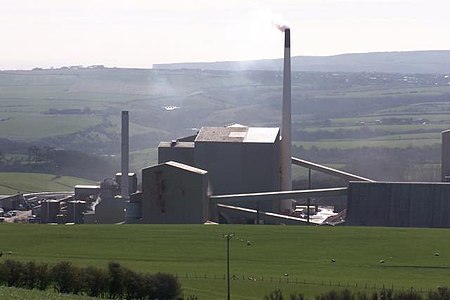Boulby Mine

Boulby Mine is a 200-hectare (490-acre) site located just south-east of the village of Boulby, on the north-east coast of the North York Moors in Loftus, North Yorkshire England. It is run by Cleveland Potash Limited, which is now a subsidiary of Israel Chemicals Ltd. (ICL). In early 2016, polyhalite mining commenced. Polyhalite is a natural multi-nutrient fertiliser providing a source of potassium, calcium, magnesium, and sulfur. It is marketed as Polysulphate by ICL and is sold in 3 grades: granular, mini-granular and standard. As well as producing Polysulphate, a granulated blend of potash and Polysulphate is sold as PotashPluS - part of ICL's wider FertiliserPluS product spectrum. It originally produced half of the United Kingdom's output of potash, an agricultural fertiliser. The mined ore consists of 35–45% sylvite ("potash", specifically potassium chloride) and 45–55% halite (rock salt, or sodium chloride). The rock salt is extracted as a by-product and used across the region as a de-icing agent on roads in winter conditions. Other minerals are produced as waste (gangue) to the main effort, but may be sought after by mineral collectors, such as boracite, which occurs just above the beds of potash.
Excerpt from the Wikipedia article Boulby Mine (License: CC BY-SA 3.0, Authors, Images).Boulby Mine
Whitby Road,
Geographical coordinates (GPS) Address Nearby Places Show on map
Geographical coordinates (GPS)
| Latitude | Longitude |
|---|---|
| N 54.5534 ° | E -0.8245 ° |
Address
Whitby Road
TS13 4UJ
England, United Kingdom
Open on Google Maps









